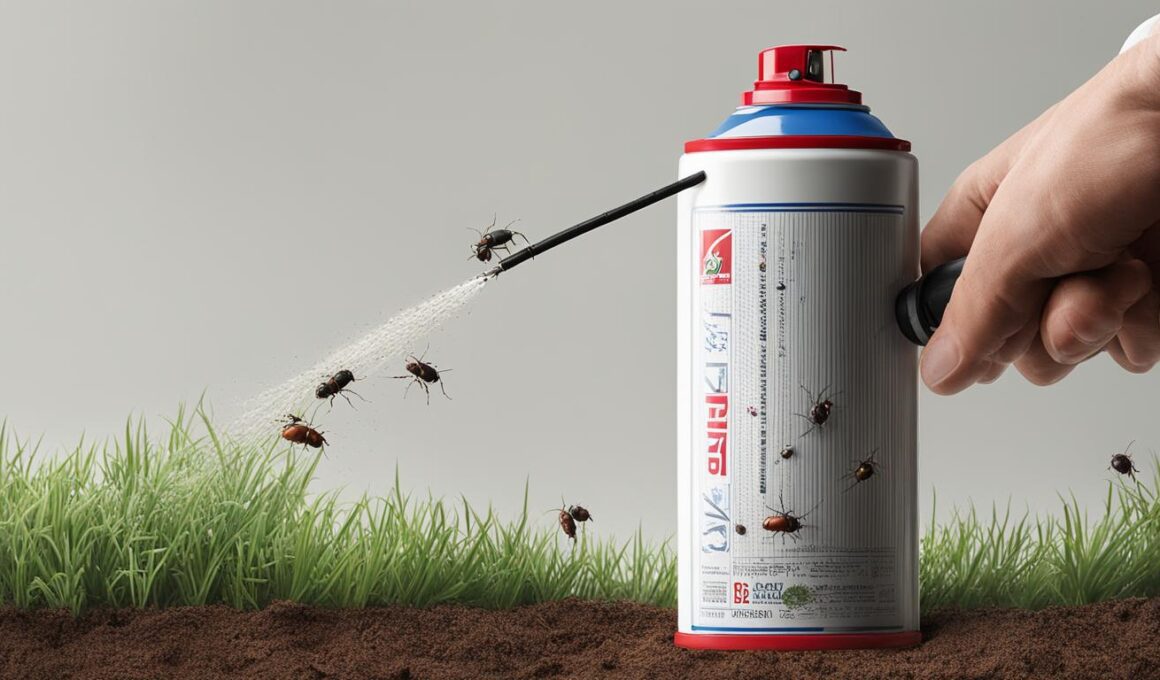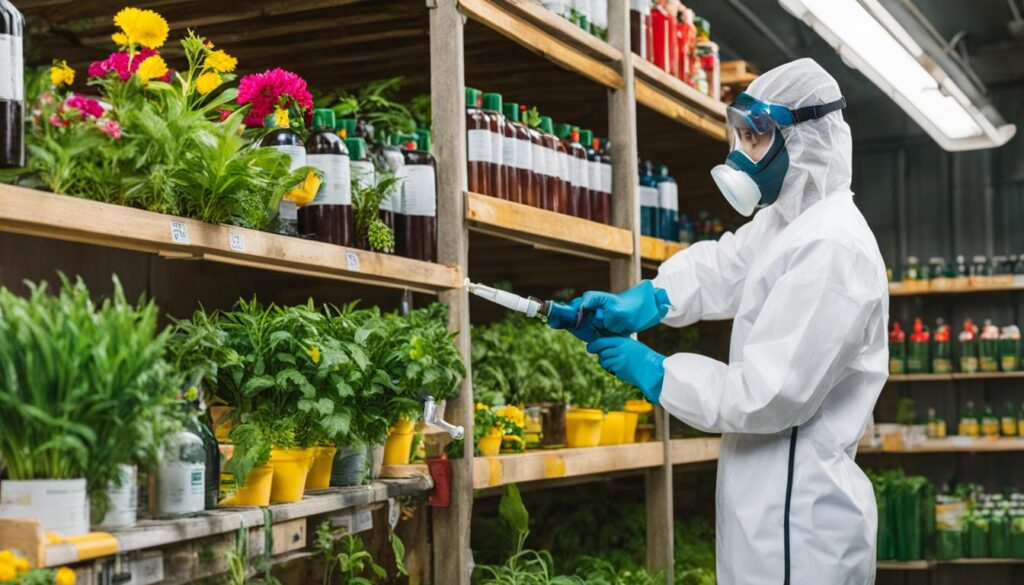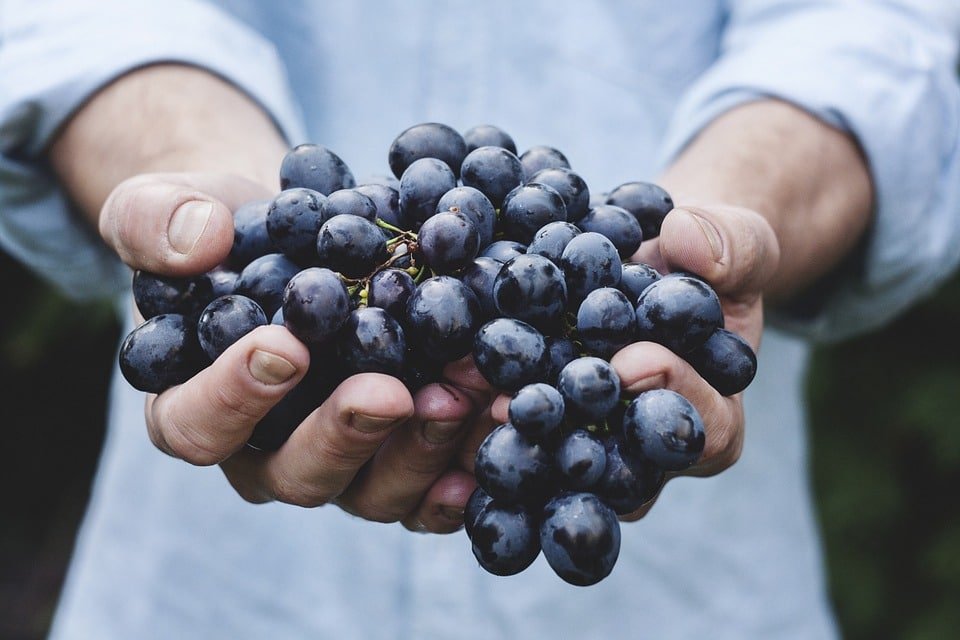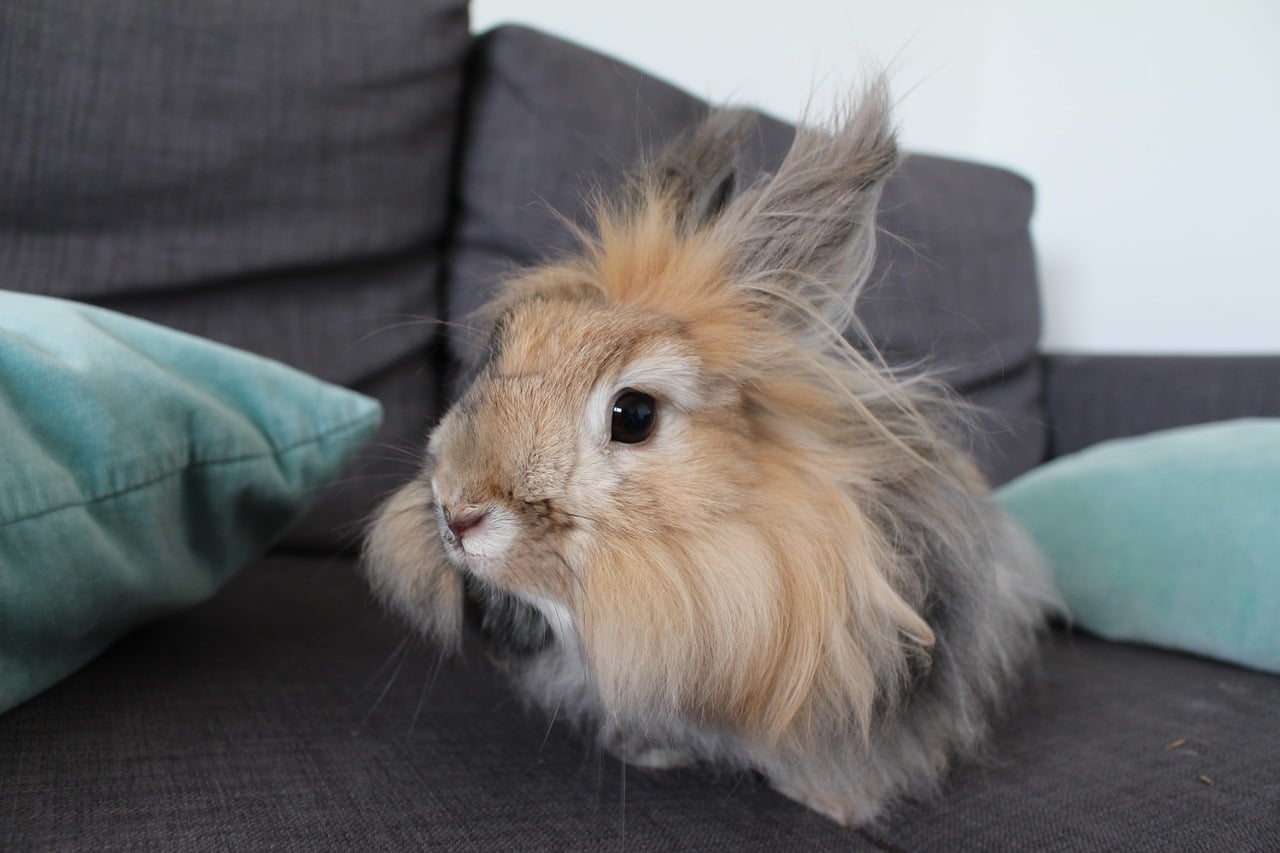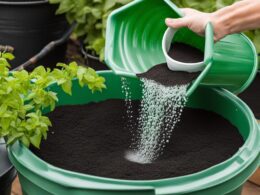When it comes to pest control and maintaining a healthy garden, Sevin spray is a popular choice among gardeners. This pesticide is commonly used to combat unwanted insects and protect your plants from damage. But how often should you use Sevin spray to effectively control pests and keep your garden in optimal condition? Let’s explore the application frequency and best practices for using Sevin spray in your garden.
Post Summary
- Sevin spray is a commonly used pesticide for garden pest control.
- Application frequency varies depending on the type of plant and pest infestation.
- Ornamental plants, such as perennials and shrubs, can be sprayed once every seven days.
- Vegetables may require re-spraying every fourteen days.
- Proper application and safety precautions should be followed to ensure effectiveness and protect yourself and others.
Application Frequency for Ornamental Plants
Sevin spray is a popular choice for pest control in ornamental plants, including perennials, shrubs, and small trees. When using Sevin spray on these plants, it is important to follow the recommended application frequency to effectively control pests without harming the plants themselves.
For perennials and shrubs, it is generally recommended to spray Sevin once every seven days. This frequent application helps ensure that pests are consistently controlled and prevents infestations from becoming severe. However, the specific frequency may vary depending on factors such as the type of plant and the severity of the pest problem. It is essential to carefully read and follow the instructions provided on the product label.
On the other hand, small trees typically require less frequent applications of Sevin spray. It is generally recommended to spray small trees four times per year, spread out evenly throughout the growing season. This limited application frequency helps maintain pest control while minimizing the overall use of the pesticide. Again, it is crucial to consult the product label and follow the manufacturer’s instructions for optimal results.
Application Frequency for Ornamental Plants
| Plant Type | Recommended Application Frequency |
|---|---|
| Perennials & Shrubs | Once every seven days |
| Small Trees | Four times per year |
By following the appropriate application frequency for ornamental plants, you can effectively protect your garden from pests while promoting the health and beauty of your plants.
Application Frequency for Vegetables
When it comes to using Sevin spray on vegetables, it’s essential to understand the proper application frequency. Different vegetables may require varying intervals between treatments to effectively control pests and ensure the safety of your crops. Follow the guidelines below for optimal results:
Frequent Application
Some vegetables, such as tomatoes, cucumbers, and leafy greens, are more susceptible to insect infestations and may require more frequent applications of Sevin spray. For these plants, it is recommended to reapply the spray every 14 days.
Less Frequent Application
Other vegetables, like root crops such as carrots and potatoes, generally have a lower risk of pest issues and can be sprayed less frequently. Applying Sevin spray every 21 to 28 days should be sufficient for these crops.
Washing Precautions
Regardless of the application frequency, it is crucial to thoroughly wash vegetables treated with Sevin spray before consuming them. This will remove any residue and ensure the safety of your produce.
| Vegetable Type | Application Frequency |
|---|---|
| Tomatoes, cucumbers, leafy greens | Every 14 days |
| Carrots, potatoes, root crops | Every 21 to 28 days |
Remember to always follow the instructions provided by the manufacturer and consider the specific needs of your vegetable plants when using Sevin spray for optimal pest control.
Proper Application of Sevin Spray
To ensure effective pest control and the safety of your plants, it is important to follow proper application instructions when using Sevin spray. By following these guidelines, you can maximize the efficacy of the product while minimizing any potential risks.
1. Shake Well and Evenly Distribute
Before applying Sevin spray, shake the product well to ensure proper mixing of the active ingredients. Evenly distribute the spray on the surfaces of the plants, including the upper and lower parts of the leaves. This will help to ensure that all areas are adequately covered and protected from pests.
2. Use Protective Gear
When handling and applying Sevin spray, it is crucial to wear protective gear to protect yourself from potential exposure. This includes waterproof gloves, a full-sleeved shirt, long pants, sneakers with socks, and chemical-resistant headwear. These precautions will help to minimize any risk of skin or eye irritation.
3. Attach Garden Hose and Aim
To apply Sevin spray, attach a standard garden hose to the spray bottle and turn the control knob to “On.” Aim the spray at the target vegetables or plants, ensuring that you cover all areas that require treatment. Be careful not to spray excessively, as this can lead to wastage and runoff.
| Protective Gear | Why it’s Important |
|---|---|
| Waterproof gloves | Protects hands from potential skin irritation and chemical exposure |
| Full-sleeved shirt and long pants | Provides coverage to minimize skin exposure to the spray |
| Sneakers with socks | Prevents accidental contact with the spray on bare feet |
| Chemical-resistant headwear | Protects the face and eyes from potential spray drift |
“Proper application of Sevin spray is crucial for effective pest control. By following the instructions and using protective gear, you can ensure the safety of yourself and your plants.”
Following these application instructions will help you achieve optimal results with Sevin spray. Remember to always read and follow the manufacturer’s instructions provided on the product label for specific guidance on safety and usage. By using Sevin spray correctly, you can keep your garden healthy and thriving, free from pesky pests.
Precautions and Storage of Sevin Spray
When using Sevin spray, it is important to take necessary precautions to ensure safety and proper storage of the product. Follow the guidelines below to protect yourself, others, and the environment:
Precautions:
- Wear appropriate protective gear, including waterproof gloves, a full-sleeved shirt, long pants, sneakers with socks, and chemical-resistant headwear.
- Avoid contact with skin, eyes, and clothing. If contact occurs, rinse thoroughly with water.
- Use Sevin spray only when necessary and according to the instructions provided by Garden Tech.
- Do not spray Sevin on blooming plants, as it is toxic to bees and other pollinators.
- Keep children and pets away from treated areas until the spray has completely dried.
- If you experience any adverse effects or symptoms after using Sevin spray, seek medical attention immediately.
Storage:
To ensure the effectiveness and longevity of Sevin spray, proper storage is essential:
- Store Sevin spray in its original container, tightly sealed and out of the reach of children and pets.
- Keep the container in a cool, dry place, away from direct sunlight or extreme temperatures.
- Check the expiration date on the bottle and dispose of any expired or unused product safely, following local regulations.
By following these precautions and proper storage guidelines, you can safely use Sevin spray for effective pest control in your garden.
| Precautions | Storage |
|---|---|
| Wear protective gear | Store in original container |
| Avoid contact with eyes and skin | Tightly sealed and out of reach of children and pets |
| Use according to instructions | Keep in a cool, dry place |
| Avoid spraying on blooming plants | Check expiration date |
| Keep children and pets away from treated areas | Dispose of expired or unused product safely |
Insects Controlled by Sevin Spray
Sevin spray is highly effective in controlling a wide variety of insect pests. Whether you’re dealing with ants, aphids, caterpillars, beetles, flies, fleas, ticks, spiders, or many others, Sevin spray can help eliminate these unwanted pests from your garden. Its powerful formula targets the nervous systems of insects, providing quick and efficient control.
One of the advantages of using Sevin spray is its broad spectrum of insect control. It can target and kill over 500 different insect pests, making it a versatile solution for your garden pest problems. From small, soft-bodied insects to larger pests, Sevin spray can handle them all.
It’s important to note that while Sevin spray is highly effective against pests, it’s essential to avoid spraying the product on non-targeted beneficial insects. These insects play a crucial role in pollination and maintaining a healthy ecosystem in your garden. To protect beneficial insects, it’s recommended to only apply Sevin spray directly on the infected areas, minimizing the risk to beneficial insects.
Insects Controlled by Sevin Spray
| Insect Pest | Controlled by Sevin Spray |
|---|---|
| Ants | Yes |
| Aphids | Yes |
| Caterpillars | Yes |
| Beetles | Yes |
| Flies | Yes |
| Fleas | Yes |
| Ticks | Yes |
| Spiders | Yes |
Sevin spray provides effective control against these and many other insect pests, allowing you to maintain a healthy garden and protect your plants from damage. For a complete list of the insects controlled by Sevin spray, refer to the product label.
Use of Sevin Dust on Vegetables and Plants
If you notice unwanted insects or damage on your home garden vegetables and plants, Sevin dust can be an effective solution. However, it is important to apply it correctly and take precautions to ensure the safety of both yourself and your plants. Before using Sevin dust, it’s crucial to wear protective gloves to prevent any contact with your skin. This will help protect you from any potential adverse effects.
The application frequency of Sevin dust may vary depending on the severity of the infestation and the specific plant. It is recommended to follow the instructions provided by the manufacturer. Generally, you should carefully dust the affected area of the plant, making sure to evenly distribute the dust. Pay close attention to the undersides of leaves, as pests often hide there.
When using Sevin dust on vegetables and plants, it’s important to note that flowering plants, such as those visited by bees, should generally be avoided. This is to protect pollinators, as the dust can be harmful to them. Additionally, it is advisable to apply Sevin dust during dry seasons and avoid application during rainy periods. Moisture can limit the effectiveness of the dust, so it’s best to apply it when conditions are dry.
Application Frequency of Sevin Dust on Vegetables and Plants
| Vegetables/Plants | Application Frequency |
|---|---|
| Tomatoes, peppers, eggplants | Once every 7-10 days, as needed |
| Leafy greens (lettuce, spinach, kale) | Once every 7-14 days, as needed |
| Squash, zucchini, cucumber | Once every 7-10 days, as needed |
| Root vegetables (carrots, radishes, potatoes) | Once every 10-14 days, as needed |
| Herbs (basil, parsley, dill) | Once every 7-14 days, as needed |
Remember to always read the product label and follow the instructions provided by the manufacturer for specific application information. By using Sevin dust properly and taking necessary precautions, you can effectively protect your vegetables and plants from insect infestations and help maintain a healthy garden.
Use of Sevin Dust on Houseplants
When it comes to dealing with unwanted insects on your houseplants, Sevin dust can be a helpful solution. Applying Sevin dust on houseplants that are taken outside for treatment can effectively control pests and keep your indoor plants healthy. However, it’s important to follow the proper application instructions to ensure safety and avoid any harm to yourself or your plants.
To apply Sevin dust on your houseplants, start by wearing protective gloves to avoid direct contact with the product. Take the houseplants outside to a well-ventilated area, away from other plants and people. Sprinkle a thin layer of Sevin dust on the foliage and stems of the plants, making sure to cover all surfaces. You can gently pat the leaves to ensure the dust adheres properly.
Allow the plants to dry completely before bringing them back indoors. This will prevent any residue from being transferred to your home and keep your indoor environment safe. Remember that Sevin dust is not intended for indoor use, as it can be toxic to humans and animals if inhaled or ingested.
By using Sevin dust on your houseplants in the right way, you can effectively control and eliminate pests, ensuring your plants thrive in a healthy environment.
Comparison of Sevin Spray and Sevin Dust Application for Houseplants
| Sevin Spray | Sevin Dust | |
|---|---|---|
| Application Method | Applied as a liquid spray | Applied as a dust powder |
| Indoor Use | No, not recommended | No, not recommended |
| Outdoor Use | Yes, on houseplants taken outside | Yes, on houseplants taken outside |
| Protective Gear | Waterproof gloves, long-sleeved shirt, pants | Protective gloves |
| Application Frequency | Varies based on plant and infestation severity | Varies based on plant and infestation severity |
| Effectiveness | Effective against a wide range of insects | Effective against a wide range of insects |
Remember to always read and follow the manufacturer’s instructions when using any pesticide, including Sevin dust. Additionally, keep in mind that houseplants are delicate and may have specific requirements, so it’s a good idea to research the specific needs of your plants before applying any product. With proper application and care, Sevin dust can help you maintain healthy houseplants free from unwanted pests.
Safety Precautions and Shelf Life
When using Sevin spray, it is important to prioritize safety precautions to protect yourself, others, and the environment. Follow these guidelines to ensure safe and responsible usage:
- Always wear protective gear, including waterproof gloves, a full-sleeved shirt, long pants, sneakers with socks, and chemical-resistant headwear to prevent direct contact with the product.
- Avoid contact with your eyes and skin. In case of accidental exposure, rinse the affected area thoroughly with water.
- Do not ingest or inhale Sevin spray. If swallowed, seek medical attention immediately.
- Store Sevin spray in its original container, tightly sealed, and out of the reach of children and pets. Keep it in a cool and dry place, away from sources of heat or open flames.
- Check the expiration date on the bottle to ensure the product is within its shelf life. Using expired Sevin spray may reduce its effectiveness in controlling pests.
Knowing the shelf life of Sevin spray is crucial for maintaining its potency. While the exact shelf life can vary depending on the product, it is essential to check the expiration date printed on the bottle. Using Sevin spray beyond its expiration date may result in reduced efficacy, compromising its ability to effectively control pests. It is recommended to replenish your supply with a fresh bottle before the current one expires to ensure optimal results.
| Shelf Life of Sevin Spray | Storage Recommendations |
|---|---|
| 1 year | Store in a cool, dry place away from direct sunlight |
| 2 years | Store in a cool, dry place away from direct sunlight |
| 3 years | Store in a cool, dry place away from direct sunlight |
It is important to note that the table above is a hypothetical example and does not reflect the actual shelf life and storage recommendations for Sevin spray. Always refer to the product label and follow the manufacturer’s instructions for accurate information.
By adhering to the specified safety precautions and being mindful of the shelf life of your Sevin spray, you can ensure its effectiveness in pest control and maintain a safe environment for yourself, your plants, and your loved ones.
Best Time to Spray Sevin Spray
When it comes to applying Sevin spray, timing is everything. Choosing the right time of day can significantly impact the effectiveness of the treatment. The best time to spray Sevin spray is during the morning or evening hours when insects are most active. This ensures that the pesticide comes into direct contact with the pests, increasing its efficiency in controlling the infestation.
Spraying Sevin spray during the cooler hours of the day, such as early morning or late evening, helps to avoid excessive evaporation of the product. Additionally, applying the pesticide when the temperature is below 85 degrees Fahrenheit and the sun is not at its hottest point reduces the risk of the spray drying too quickly or becoming less effective.
It is important to note that spraying Sevin spray in windy conditions should be avoided. Strong winds can cause the product to drift away from the targeted area, reducing its efficacy and potentially harming beneficial insects. Therefore, it is recommended to choose a calm day with little to no wind for optimal results.
| Best Time of Day | Conditions |
|---|---|
| Morning or evening | Insects are most active and temperature is below 85 degrees Fahrenheit |
| Avoid windy conditions | Prevent drift and ensure targeted application |
Expert Tip:
“To maximize the effectiveness of Sevin spray, make sure to follow the recommended application guidelines and timing. Applying the pesticide during the morning or evening hours when insects are active and the temperature is favorable will help you achieve the best results.”
By applying Sevin spray at the right time of day and under the ideal conditions, you can effectively control pests and protect your plants from damage. Remember to always read and follow the instructions provided by the manufacturer for the best results.
Sevin Spray and Pet Safety
When it comes to using Sevin spray in your garden, it’s essential to prioritize the safety of your furry friends. While Sevin spray is an effective tool for controlling pests, it’s important to take precautions to ensure that your pets are not harmed by its application.
First and foremost, always keep your pets away from treated areas until the spray has dried. This will minimize the risk of direct contact and potential ingestion. Remember, pets can be curious creatures, so it’s crucial to prevent them from nibbling on plants that have been treated with Sevin spray.
To further safeguard your pets, it’s advisable to carefully follow the manufacturer’s instructions and guidelines for pet safety. These instructions will provide specific recommendations on the appropriate wait time before allowing pets back into treated areas. Additionally, consider using physical barriers or temporary fencing to restrict access to treated areas during and immediately following application.
By taking these precautions, you can protect your pets from potential harm while effectively using Sevin spray to control pests in your garden. Remember, the safety and well-being of your pets should always be a top priority.
Conclusion
Sevin spray is an effective pesticide for controlling garden pests and maintaining the health of your plants. By following the proper application frequency for ornamental plants and vegetables, you can ensure optimal use of Sevin spray.
Remember to thoroughly wash fruits and vegetables treated with Sevin spray before consuming them to ensure safety. Additionally, it is important to wear protective gear during application and follow the instructions provided by Garden Tech.
By using Sevin spray responsibly and following the recommended guidelines, you can effectively control pests and keep your garden in optimal condition. Whether you have ornamental plants or a vegetable garden, Sevin spray is a valuable tool in your pest control arsenal.
What Are the Recommended Frequency and Safety Precautions for Using Sevin Spray?
When using Sevin insecticide safety evaluation, it is important to adhere to recommended application frequencies and safety precautions. Applying the spray at the recommended intervals and using protective gear can help minimize potential risks to human health and the environment. Always follow the label instructions for safe and effective use.
FAQ
How often should I use Sevin spray?
Sevin spray should be applied once every seven days on ornamental plants, but the frequency may vary depending on the type of plant. For fruits and vegetables, it is recommended to thoroughly wash them before consumption.
How frequently should I apply Sevin spray on ornamental plants?
Perennials and shrubs may require up to six applications per year, while small trees only need to be sprayed four times per year. Follow the recommended waiting period between applications.
What is the application frequency for vegetables?
Vegetables can be re-sprayed with Sevin spray every fourteen days after the previous application. Thoroughly wash the vegetables before eating them and apply Sevin spray on calm days with no rain forecasted for the next 24 hours.
How do I properly apply Sevin spray?
Shake the product well and evenly distribute it on the plant surfaces, including the upper and lower parts of the leaves. Attach a standard garden hose and aim at the target vegetables, turning the control knob to “On.” Follow the instructions for use provided by Garden Tech and wear protective gear.
What precautions should I take when using Sevin spray?
Sevin spray should only be used when necessary and on plants and vegetables. Store it in its original container, sealed, and out of the reach of children and pets. Avoid spraying Sevin on blooming plants, as it is toxic to bees. Follow safety guidelines to prevent health issues.
What insects can Sevin spray control?
Sevin spray is effective in controlling more than 500 different insect pests, including ants, aphids, caterpillars, beetles, flies, fleas, ticks, and spiders.
How should I use Sevin dust on vegetables and plants?
Use Sevin dust at the first sign of unwanted insects or damage. Wear protective gloves and apply the dust depending on the severity of the infestation. Apply in dry seasons and avoid rainy periods. Flowering plants should generally be avoided to protect pollinators.
Can I use Sevin dust on houseplants?
Sevin dust can be used on houseplants that are taken outside for treatment. Coat the plants with Sevin dust and allow them to dry before bringing them back indoors. Avoid applying Sevin dust indoors.
What safety precautions should I follow when using Sevin spray?
Take safety precautions during application, such as wearing protective gear and avoiding contact with eyes and skin. Check the shelf life of Sevin spray and follow the expiration date on the bottle.
When is the best time to spray Sevin spray?
Sevin spray can be applied at any time during the day, but it is recommended to avoid spraying in windy conditions. Spray when insects are most active, typically in the morning or evening hours. Avoid applying Sevin spray when the temperature is above 85 degrees Fahrenheit and the sun is at its hottest point.
How can I ensure pet safety when using Sevin spray?
Keep pets away from treated areas until the spray has dried. Follow the manufacturer’s instructions and guidelines for pet safety.
Is Sevin spray an effective pesticide for garden pest control?
Yes, Sevin spray is commonly used for garden pest control, effectively controlling more than 500 different insect pests.





